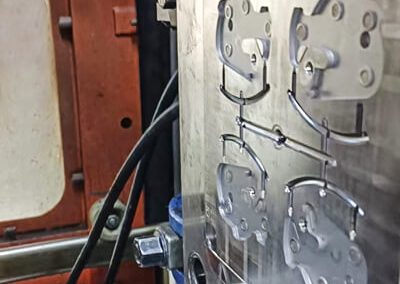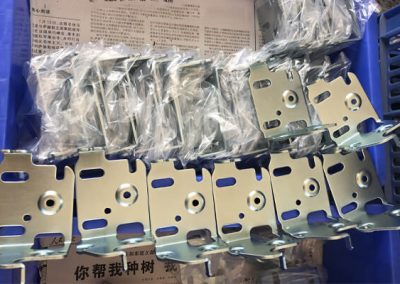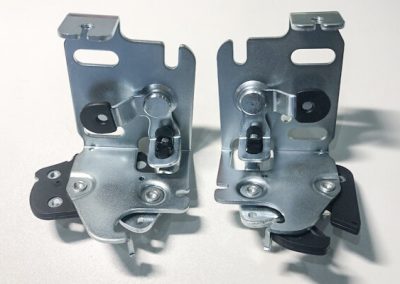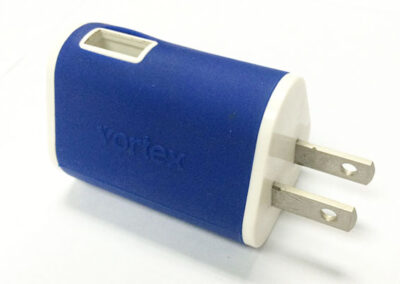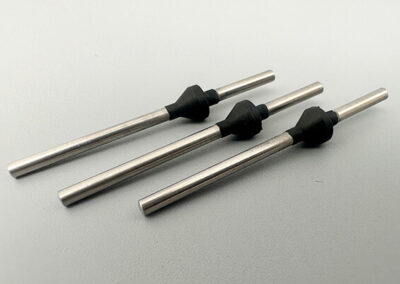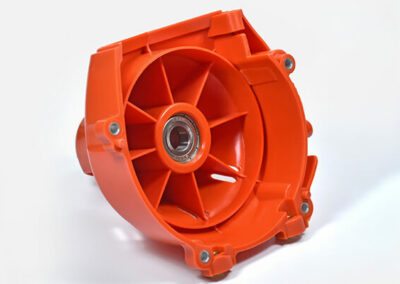Overmolding vs Insert Molding: Tips for Custom Molded Parts
There are two practical processes to make custom molded parts: overmolding and insert molding. As an expert of manufacturing molded parts, Sungplastic delve into these processes in several aspects:
What is overmolding and its pros and cons
What is insert molding and its pros and cons
How to choose: overmolding vs insert molding
Design guidelines of overmolding and insert molding
And their common uses
If you are interested or your businesses need these services, please learn more below.
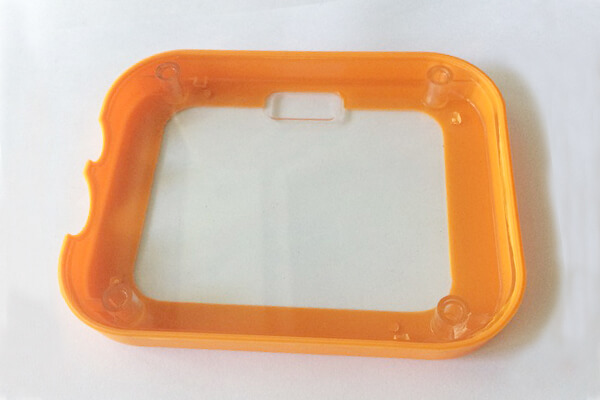
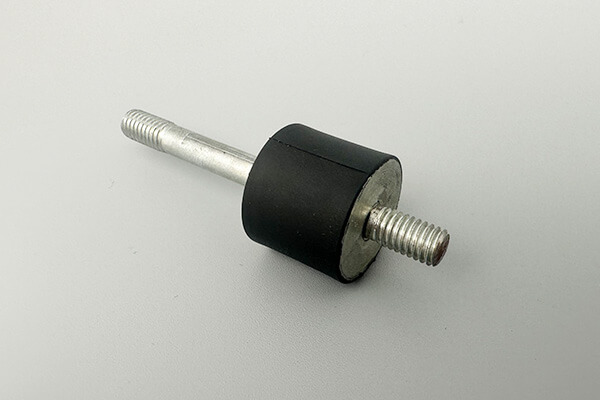
What is Overmolding?
Overmolding represents a specialized variant of plastic injection molding. Diverging from the traditional molding approach where a final product is produced in a single cycle, overmolding necessitates an additional injection cycle that employs a distinct material. This technique is also referred to as 2K overmolding, two-shot molding, or even multiple material molding.
The overmolding process commences with a foundational substrate, atop which a comparatively softer TPE or TPU material is affixed. This foundational base can be crafted from either metal or plastic, although our focus in this article will primarily center on plastic applications.
In cases where the substrate is composed of plastic, it is customary to mold it during the same production cycle. This practice is driven by both cost-efficiency considerations, as it is more economical to create the entire finished piece in one go, and by the fact that the elastomer adheres more effectively to a still-warm, semi-cured, and “sticky” substrate.
Overmolding necessitates the utilization of a distinct type of plastic injection molding tool, designed with two cavities: one for the substrate portion and another, separate cavity that represents the overmolded section.
The initial conventional injection cycle is dedicated to shaping the substrate, employing a standard thermoforming resin. This resin fills the gate, runner, and cavity system of only one part of the mold, while the section corresponding to the overmold is deliberately blocked off.
Once the base has sufficiently cooled and partially solidified, the mold is repositioned and connected to a separate nozzle, gate, and runner system. Subsequently, the remaining void within the mold tool cavity is filled with TPE or TPU elastomer, ultimately creating the overmold that adheres to the substrate.
It’s worth noting that the overmolding process is not confined to just two materials and, in theory, can be expanded to incorporate an indefinite number of additional overmolds. However, in practical terms, the complexity and cost tend to increase significantly beyond two materials.
Advantages of Overmolding
There are several compelling reasons why product designers opt for the inclusion of overmolding in plastic components.
Here are the primary advantages:
-
- Enhanced Comfort and Functionality
Overmolding allows for the addition of a comfortable grip to otherwise bare plastic parts. This not only enhances user comfort but also serves practical purposes, such as absorbing unwanted vibrations and providing protection against excessive heat or electrical shock. - Improved Aesthetics
Elastomer materials used in overmolding can be molded with complementary or contrasting colors, thereby enhancing the visual appeal of the product. Innovative designers can leverage overmolding to create embossed or debossed areas featuring a company’s unique name, logo, or insignia for branding and aesthetic purposes. - Robust, Permanent Hand Grips
Overmolding establishes a robust bond with the substrate, often exceeding the shear strength of the thermoplastic elastomer (TPE) itself. This results in overmolded grips that do not randomly detach or slip off. Consequently, such grips are commonly found on a wide range of products, including sporting goods and power tools, as they can withstand rigorous use and challenging conditions without separating from the base material.
- Enhanced Comfort and Functionality
Drawbacks of Overmolding
To achieve optimal outcomes through the overmolding process, product developers should be mindful of the following limitations and potential disadvantages:
-
- Specialized Molds or Tools
Overmolding necessitates the use of specialized molds or two separate tools, both of which increase development costs and require more time for construction compared to conventional single-shot molding. - Specialized Equipment
Overmolding demands the utilization of specialized equipment, which may not be readily available from all suppliers. Those offering this service may also charge higher rates, adding to production costs. - Slower Process
The overmolding process may be slower than conventional molding. It often involves more manual labor and ties up two pieces of production equipment to create a single finished part. However, it remains cost-effective, especially for relatively small production volumes. - Compatibility Issues
Some elastomers may not adhere effectively to certain types of base plastics. Collaboration with suppliers well in advance of production is recommended to assess material compatibility or explore alternative options to ensure successful overmolding processes.
- Specialized Molds or Tools
What is Insert Molding?
Insert molding is a manufacturing process that involves positioning a pre-fabricated component, such as a threaded fitting or an electrical contact, onto a mounting pin or another fixture within a plastic injection molding tool. During the molding cycle, a thermoforming resin envelops this insert, solidifying around it to securely and permanently affix it in place.
Six Advantages of Insert Molding
Inserts can take the form of either male or female components. Female inserts are employed to create circular fittings within the surrounding plastic. When these female inserts feature internal threads, they are commonly referred to as “nutserts.” There are numerous advantages associated with the utilization of both male and female inserts to enhance the appearance and functionality of a product.
Here are the six advantages of insert molding:
-
- Enhance structural integrity and facilitate reusable connections with threaded inserts. While the inclusion of nutserts may introduce an initial cost, this expense is outweighed by the avoidance of secondary operations like drilling and tapping, which consume both time and resources.
- Employ inserts in situations where thin-walled cases are unsuitable for traditional tapping methods.
- Utilize inserts with existing machinery, eliminating the need for costly equipment upgrades.
- Achieve permanent sealing of components, guarding against issues such as pull-out, vibration, moisture, and dust. This is particularly valuable for safeguarding electrical connections.
- Manufacture robust overmolded hand grips, commonly found on hand tools, streamlining the production of fully finished parts in an efficient and cost-effective single operation.
- Reduce weight and production costs in complex assemblies. For instance, consider a standard toggle switch or lever. By incorporating metal only where necessary for mechanical functionality and substituting plastic for the rest of the component, the overall weight of the assembly is decreased. This approach not only reduces costs but also lessens the reliance on pricier full-metal alternatives.
When applied to a fleet of aircraft or mass-produced automobiles, this design approach can yield substantial reductions in both weight and production expenses.
Drawbacks of Insert Molding
While insert molding offers numerous advantages, there are several potential disadvantages that designers should take into consideration:
-
- Increased Labor Costs
When inserts are manually inserted, labor costs tend to be higher. This manual handling can be more time-consuming and costly compared to automated processes. - Variability in Cycle Times
Handloading of inserts can result in variable cycle times during the molding process. This variability can be problematic because, in plastic injection molding, precise control of machine cycling time is crucial for cost savings and accurate prediction of product shipment dates. While manual insertion may be economically viable for relatively smaller production volumes, typically below 20,000 units per year, as volumes increase, it often becomes more cost-effective to invest in automation. Automated processes can ultimately offset labor costs by reducing cycle time. - Shrinkage-Induced Cracking
Resin used in the molding process can shrink around the insert, potentially causing it to crack. This issue is particularly relevant when working with materials like polycarbonate plastic. Strategies for addressing this problem will be discussed later in this discussion. - Resin Intrusion
The molding pressure applied during the process can force resin into the insert, leading to excess flash material that needs to be removed in a separate step. This flash removal adds complexity and additional processing time. - Tool and Insert Compatibility
Proper tool design is essential for ensuring that the insert fits correctly within the mold when it is closed and subjected to injection pressure. If the insert and tool are not compatible, it can result in mold damage or even its destruction.
- Increased Labor Costs
Understanding and mitigating these drawbacks is critical for successful insert molding processes and achieving desired outcomes in terms of cost-efficiency and product quality.
How to Choose Between Insert Molding or Overmolding for Your Project
The decision between insert molding and overmolding for your project hinges entirely on your specific application. It’s important to note that these two molding methods are not mutually exclusive because they serve distinct purposes. In fact, it’s quite common to find both methods employed in a single product. Consider, for instance, a power tool equipped with overmolded grips on the handle and the use of nutserts to secure the casing together.
When to Opt for Insert Molding
Insert molding is a preferred choice in several scenarios.
Here are some key considerations:
-
- Mechanical Strength Requirements
If your product application demands robust mechanical connections to hold multiple parts together, particularly for enclosures or housings, insert molding is a viable option. Threaded nutserts work effectively for this purpose, and snap connectors offer alternative solutions. - Combining Rubber or Plastic with Metal
Insert molding is instrumental in affixing a rubber or plastic handle onto a metal component, a common feature on hand tools or kitchen knives. It’s also ideal for sealing wires and electrical connectors within permanent plastic housings to safeguard against dust and moisture. - Occasional Service Access
Inserts should be used when a plastic casing requires occasional opening for servicing or maintenance, followed by secure resealing. Although they may incur slightly higher costs, the enhanced durability of the end product justifies this expense.
- Mechanical Strength Requirements
When to Consider Overmolding
Product developers should contemplate overmolding in the following scenarios:
-
- Improved Grip and Texture
Overmolding is valuable for enhancing the grip and texture of parts intended for manual handling. It is particularly useful for protecting end users from vibrations, heat, or electrical hazards. - Bonding Rubber to Metal
Overmolding excels in creating a permanent bond between rubber and metal components, commonly seen in applications like wheels and casters. - Aesthetic Enhancement
Overmolding presents opportunities for creative design by incorporating colorful patterns and designs, thereby improving the appearance and performance of the part. - Cushioning and Shock Absorption
Overmolding can introduce cushioning and shock absorption properties to various household items, enhancing user safety by minimizing the risk of accidental injuries.
- Improved Grip and Texture
The choice between insert molding and overmolding should align with the specific requirements and goals of your project, whether it’s prioritizing mechanical strength, improving grip and safety, enhancing aesthetics, or achieving other unique objectives.
A Concise Guide to Designing for Insert Molding and Overmolding
In this guide, we outline essential considerations for designing with both overmolding and insert molding techniques in mind, so that we can produce the quality parts.
Overmolding Design Guidelines
When incorporating overmolding into your design, remember that it typically covers specific sections of the base substrate.
Here are key design tips to keep in mind:
-
- Material Compatibility
Collaborate with your manufacturing partner to ensure compatibility between the base substrate and the chosen TPE or TPU material for overmolding. - Melt Temperature
Select a TPE or TPU material with a lower melt temperature than that of the base plastic to prevent issues during the molding process. - Thickness Differential
Design the overmold to be slightly thinner than the substrate it supports for a balanced structure. - Surface Alignment
Ensure that the overmold is positioned just below the surface of the substrate for a seamless appearance. - Enhanced Holding Power
If greater holding power is required, consider incorporating design elements like undercuts, keyways, and mechanical features to effectively secure the materials together.
- Material Compatibility
Insert Molding Design Guidelines
Insert molding presents unique engineering challenges, necessitating careful consideration. Here are important guidelines to address these challenges.
Shrinkage Mitigation:
The primary concern with insert molding is resin shrinkage, which can lead to hoop stress around the insert, potentially causing cracking over time, especially under mechanical tension.
Counteract this by:
-
- Selecting resin materials with a lower shrinkage rate.
- Opting for resin materials fortified with fillers to minimize shrinkage.
- Surrounding the insert with a larger area of plastic to distribute stress.
- Supporting the insert with bosses and ribs for added structural integrity.
- Preheating inserts before molding to enable synchronized cooling and shrinkage between the resin and insert, reducing material stress.
- Considering pre-manufactured inserts with knurled surfaces to enhance their grip within the molding.
- Utilizing rounded profiles instead of sharp corners to minimize stress concentrations.
- Designing inserts with a slight recess to prevent tool damage during the molding process.
Incorporating these guidelines into your design process for overmolding and insert molding will help you optimize the performance, durability, and appearance of your final product while addressing the specific challenges posed by each molding technique.
Typical Uses of Overmolding and Insert Molding
Both overmolding and insert molding offer versatility that transcends specific industries or product categories. Their adaptability makes them valuable in various applications, and as new opportunities arise, their benefits continue to be harnessed. Here are several common uses about them:
Hand and Power Tools
Lawn and Garden Equipment
Agricultural Machinery
Kitchen Utensils
Sporting Equipment
Electrical Switches
Health and Beauty Products
Household Appliances
Automotive and Transportation Components
Furniture
Computers and Electronics
Toys and Games
Medical Instruments
The broad range of applications demonstrates the versatility and utility of both overmolding and insert molding techniques across diverse industries and product types.
Sungplastic specializes in overmolding and insert molding for many years. In our machining shop, there are a professional team including designers, engineers and technicians, equipped with advanced automation machinery.
If overmolding and insert molding are suitable for your projects, contact us and you’ll get the best results from our services.
Get a free quote and design analysis today.
We’ll reply to you within 6 working hours.
We respect your privacy.
+86 139 2927 4777 (WhatsApp, Wechat)

